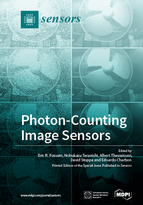Photon-Counting Image Sensors
A special issue of Sensors (ISSN 1424-8220). This special issue belongs to the section "Physical Sensors".
Deadline for manuscript submissions: closed (12 February 2016) | Viewed by 235835
Special Issue Editors
Interests: Solid-state image sensors (CCDs, CMOS active pixel sensors, Quanta Image Sensors); advanced imaging systems; on-chip image processing; new applications for image sensors
Special Issues, Collections and Topics in MDPI journals
Special Issues, Collections and Topics in MDPI journals
Interests: high-performance imaging, quantum integrated circuits, and design automation algorithms
Special Issues, Collections and Topics in MDPI journals
Special Issue Information
Dear Colleagues,
The field of photon-counting image sensors is advancing rapidly with the development of various solid-state image sensor technologies including single photon avalanche detectors (SPADs) and deep-sub-electron read noise CMOS image sensor pixels. This foundational platform technology will enable opportunities for new imaging modalities and instrumentation for science and industry, as well as new consumer applications. Papers discussing various photon-counting image sensor technologies and selected new applications are presented in this all-invited Special Issue.
Prof. Dr. Eric R. Fossum
Prof. Dr. Edoardo Charbon
Dr. David Stoppa
Prof. Dr. Nobukazu Teranishi
Prof. Dr. Albert Theuwissen
Guest Editors
Manuscript Submission Information
Manuscripts should be submitted online at www.mdpi.com by registering and logging in to this website. Once you are registered, click here to go to the submission form. Manuscripts can be submitted until the deadline. All submissions that pass pre-check are peer-reviewed. Accepted papers will be published continuously in the journal (as soon as accepted) and will be listed together on the special issue website. Research articles, review articles as well as short communications are invited. For planned papers, a title and short abstract (about 100 words) can be sent to the Editorial Office for announcement on this website.
Submitted manuscripts should not have been published previously, nor be under consideration for publication elsewhere (except conference proceedings papers). All manuscripts are thoroughly refereed through a single-blind peer-review process. A guide for authors and other relevant information for submission of manuscripts is available on the Instructions for Authors page. Sensors is an international peer-reviewed open access semimonthly journal published by MDPI.
Please visit the Instructions for Authors page before submitting a manuscript. The Article Processing Charge (APC) for publication in this open access journal is 2600 CHF (Swiss Francs). Submitted papers should be well formatted and use good English. Authors may use MDPI's English editing service prior to publication or during author revisions.
Keywords
- Photon-counting
- Single photon detection
- Image sensor
- SPAD
- avalanche photodetector
- Deep sub-electron read noise
- Quanta image sensor








